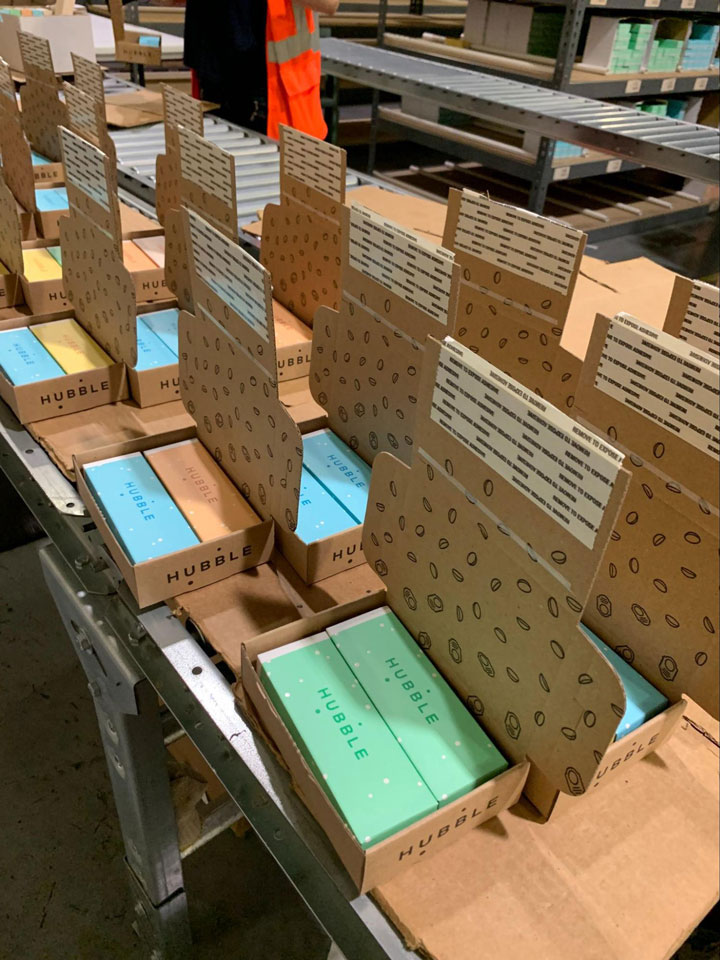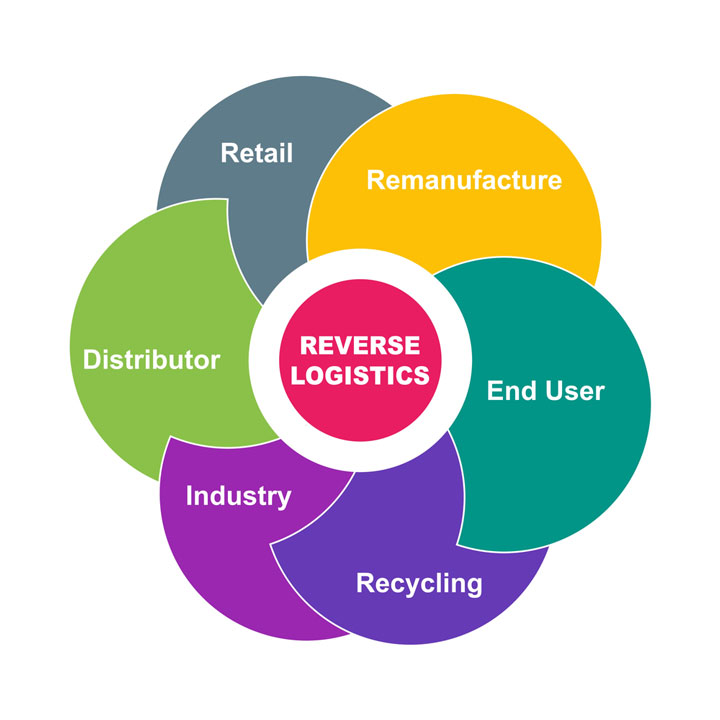
Every vendor in the market is now looking for warehouses and fulfillment centers that are offering value-added services.
What are value-added services? To answer this question, we need to understand what the primary function of a fulfillment center or a warehouse is. From there, we can understand what services we can offer to increase the value of the overall service provided.
What Do Warehouses and FCs Do?
Warehouses are generally understood as massive storehouses that are responsible for holding and shipping inventories to others. Usually, the services expected from a warehouse are unloading, storing and loading inventories as they arrive and are required at a later date.
For fulfillment centers, the service goes beyond just storing as the establishment takes responsibility for receiving multiple cases of products, managing orders and sorting inventories to pick, pack and deliver these orders to the end consumer.
This is the expected primary purpose of a fulfillment center, whereas we all know this isn’t what modern-day FCs or even warehouses are offering.
They’re taking care of custom packaging, labeling and even providing branded services along with reverse logistics. And we all know why.
In this industry, there aren’t many things different companies can work on other than streamlining their operations and achieving peak efficiency by reducing the time they take to complete orders and the number of perfect orders they achieve.
After you’ve automated your warehouse with futuristic robots, what else can you do to attract and retain customers?
That’s where value-added services come in.
Why Offer Value Added Services in Warehouses?
Providing clients with more than just space to store inventory, e.g., order management, fulfillment logistics, palletizing services or kitting packages, etc. can be referred to as value-added services.
While some may say that this will turn your warehouse into a fulfillment center, and they may be partially right, we need to understand that the market has evolved and offering value added services has become a prerequisite.
You can’t hope to stand out from the competition unless you’re offering something more. This is probably why the lines have been blurred between a warehouse vs fulfillment center.
The idea of offering value-added services is the same as everywhere else. You need to appeal to businesses and sign up more clients.
However, though they might seem like additional expenses, these investments can double your ROI and even provide you with expansion opportunities.
Intriguing examples of modern fulfillment centers offering interesting new services such as a photo studio with professional product photography are worthy of attention.
Why? Because they are certainly appealing to their growing number of clients who are saving costs, time and the hassle to go for individual services.
The ideal fulfillment center in 2022 isn’t the one providing FTL, packaging and label services as there’s a huge number of centers that are offering reverse logistics, kitting, and transloading services, to name a few.
Warehouses and fulfillment centers that aim to keep up with the growing demands of the vendor market are experiencing massive changes but not without the revenue growth to justify it.
Some companies have even started offering returns management and exchange optimization by helping businesses run reverse logistics through their fulfillment centers and warehouses.
This has proven to be a remarkably advantageous move for companies that can now ship inventories in bulk and save costs.
Similarly, examples like the fulfillment center that offers product photography for vendors show that businesses are keen on outsourcing more and more services to the people who are willing to take it.
In terms of upselling or business development in general, warehouses and FCs are bound to look towards more than just warehouse automation for further growth opportunities.
Things to Consider When Offering VAS
Although value-added services are detrimental to certain industries, there’s no one perfect business model for all warehouses to follow. This is why it’s important to understand the market before taking a step such as this.
Since offering even one extra service can transform your supply chain operations, you have to carefully think things through.
That said, the market is ripe for the taking in terms of attracting vendors and if your competition is offering something, so should you. You might not be able to offer return logistics, but you can look towards kitting services and stand out.
To understand the various types of value-added services offered today, let’s take a look at some of the most common and eccentric, yet effective offerings:
Types of Value-Added Services in FCs and Warehouses
Kitting

FCs are far more preferred than warehouses and it’s all because they are willing to take on more responsibility in terms of order fulfillment. Many fulfillment centers take it a step further and offer you kitting.
Kitting basically refers to the process of packing individual products up in a ready-to-deliver package. This can sometimes involve piecing together different SKUs or assembling items before they’re ready to be shipped.
Although that’s the general definition, several FCs offer a series of other related services such as labeling and branding packages. For vendors, this is extremely beneficial as it generates trust and credibility with customers.
Orders that entail a variety of different products can be picked and packed even before orders have been placed. Several FCs elevate and increase efficiency by analyzing patterns and packing a kit of frequently ordered products.
Those that have installed warehouse automation systems are better able to execute these processes on already established assembly lines.
This saves time with packing and makes it easier to label just one item rather than individual products separately. If you’re running a fulfillment center, you may understand that there are times when labor is available because the workload is minimal.
These are times managers ought to initiate the kitting process and assemble more kits. As a brand, this also means you’re saving more money because you’re paying less for the whole package compared to the costs that you’re accruing for each item separately.
Another aspect of kitting as a value-added service involves labeling and stickering. This isn’t something all FCs offer but those who do certainly find more customers because of it.
There can be times when there are issues with order management or the FC receives a wrong order. These circumstances require immediate solutions that also involve ensuring the right labels and stickers are used.
For example, if a shipment that’s to be made at one place has been mistakenly sent to another, there are going to be problems with package labels. To fix this promptly, FCs can charge a little extra to the vendor but save time and inevitably, more costs.
Lastly, the rarest aspect of kitting services is offering the retail display assembly. Items that are supposed to go on display aren’t handled like others as they can involve different combinations or even totally different SKUs.
Sometimes, these can be products with special discounts or even be a bundle of different products being packed and displayed as one.
This is why it’s complicated for FCs and a little expensive for vendors to run an assembly line and ensure the job is done perfectly.
Integrations

Although many have picked up on this popular service, some FCs and warehouses still refuse to go digital with their infrastructure and incorporate cloud-based tools to increase their efficiency and overall visibility.
The idea is simple. Once you have a custom ERP in place that automates most of your tedious tasks, you can offer integration options to your clients that serve as a portal for them to check the status of their inventories.
In fact, this can go beyond just a B2B platform, meaning you can offer customers that are awaiting deliveries tracking visibility. Vendors that aren’t providing this service themselves can rely on FCs to do it for them.
Not only can offering all this significantly reduce support work and client/customer concerns, but it will also give you important KPIs to measure and improve performance.
Tools like Capabl are designed specifically for fulfillment centers and brands to streamline communications and ensure visibility for both parties. This allows fulfillment centers to show and boast their success rates over hundreds of thousands of deliveries.
Logistics Support

FCs that offer logistics support certainly get their deserved attention from countless companies that launch their business in unfamiliar markets.
The way this works is that certain FCs can have brokers working for them that connect with your 3PL provider and organize your inventory at their convenience.
Offering cross-docking and transloading is another viable option if you can afford it. Just make sure you have the right infrastructure in place before you make massive changes.
Some FCs can take it a step further and even offer portage or end-to-end international import options while ensuring that your logistics provider is getting the inventory in their preferred LTL or FTL freights.
While they may not own the assets that they promote, their experience and networks in the field can be leveraged to streamline your supply chain as well.
In addition to this, you can also offer reverse logistics which is the next most crucial need of any e-commerce store. A recent study shows that 5-15% of customers are likely to return products they buy online.
This means that vendors need returns management and therefore, reverse logistics. Just like managing your current business model, you only have to add to your current infrastructure.
Checking out returns management software and reverse logistics services is the best way to start.
With integrations in place, you can easily synchronize your inventory and warehouse management with your customer and order management software.
Marketing Support
Warehouses and FCs aren’t just there to hold and deliver your products. They can even help you sell more. Offered as a value-added service, many FCs around the country have set up inbound and outbound call centers.
The purpose of their operations is to drive up the demand for the products they’re holding so that they get to fulfill more of them.
Coupled with photography studios, labeling and packaging customizations, and a lot more, it’s sometimes difficult to distinguish between an FC offering marketing services or a marketing firm offering fulfillment services.
The opportunity to expand is there for anyone willing to step out of their comfort zone.
These establishments have made significant profits off of these business decisions and there’s a reason they’re continuing to evolve and expand in not just geographical territories, but industries and services as well.
There’s no exact definition left to define what a fulfillment center ought to be once you add the expanding variety of value-added services that exist in the market.
As long as you’re not compromising on your primary objective of order fulfillment, you can provide any other service a vendor can require.
Labeling and Packaging

In terms of packaging, FCs can go beyond and not just assemble your products but even print your logos on items that need to be shipped.
Similarly, FCs can take in requests for gift purchases and even offer custom wrapping and delivery options that include, but are not limited to, custom messages and personalized greetings.
One of the latest and most impressive labeling and packaging services available in the market is laser engraving. For marketers, this is an amazing opportunity to impress their customers in addition to ensuring loyalty and future sales.
Having a DTF printer can allow FCs to offer all kinds of vendors the privilege of printing their logos on customer packages. Custom delivery options can make for amazing reviews, especially when customers have the option to personalize their gifts.
Before Adding VAS
Value-added services in warehouses and fulfillment centers are extremely necessary in today’s market. You need to choose the services you can provide after carefully evaluating your particular situation.
It’s important that your supply chain operations support any decision you make. Anything you choose to do can have massive impacts and in order to be safe, it’s always best to seek expert advice.
Don’t hesitate to connect with our professional consultants at Izba and discuss the best possible scenarios for your business.




